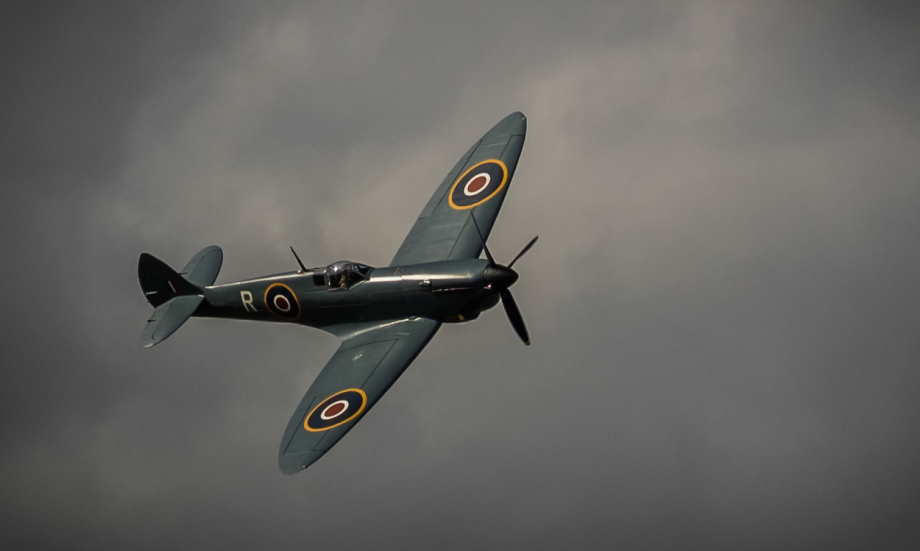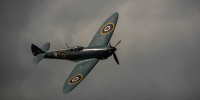Miss Shilling's Orifice
This week I want to pay homage to a brilliant engineer, Beatrice “Tilly” Shilling.
Beatrice (Tilly) Shilling OBE PhD MSc CEng (8 March 1909 – 18 November 1990), was born in Hampshire, UK, and played a very important part in World War II, and the defence of Britain.
 Image: University of Manchester
Image: University of Manchester
From a young age, it was clear Tilly was destined to become a great engineer; spending pocket money on tools and Meccano sets, and tinkering with motorcycles as a teenager (which she would later race, successfully, and is one of only three women to have been awarded a British Motorcycle Racing Club Gold Star for lapping the Brookland’s circuit at over 100 miles per hour).
Tilly received her Bachelor’s degree in electrical engineering, followed by a Masters in Mechanical Engineering, and finally ending up with the position of scientific officer at the Royal Aircraft Establishment, just before the outbreak of World War II. (I’m humbled to say that I also did an apprenticeship at RAE during my Master’s degree. When I attended, it had been renamed the Royal Aerospace Establishment. It’s since changed names a couple more times).
Spitfire
The Spitfire is, arguably, one of the most beautiful aircraft ever designed (standing shoulder to shoulder with Concorde). It was designed by none other than RJ Mitchell, another prolific engineer (with the design continuing under the guidance of Joseph Smith after Mitchell’s untimely death).

I Iove this quote from Mitchell:
“If anyone tries to tell you something about an aeroplane which is so damn complicated you can't understand it, you can take it from me it's all balls.”
Probably less well known is his response when they told him the name the RAF had given to his new creation, "Spitfire was just the sort of bloody silly name they would choose.”
The Spitfire is the only British fighter aircraft that was used continuously throughout WWII (and then after), in ever increasingly powerful variants. It’s now 80 years old, and around 60 of them are still flying and delighting crowds at displays all over the World. 22,685 Spitfires and derivatives were built (I believe this makes it the most popular British aeroplane ever built).
The prototype Spitfire made her maiden flight, in 1936, from Eastleigh Airport (now Southampton Airport). A couple of random connections: coincidentally, Eastleigh Airport is also the airport that I first flew a plane solo from, and the Spitfire made her maiden flight on my late father’s birthday.
The premise of Spitfire was simple; strap a big, powerful, engine (initially the 27 litre Rolls-Royce Merlin V12 engine), to a strong, light-weight, metal airframe to create a high speed fighter aircraft. Mitchell’s brilliant design incorporated mathematically (and aerodynamically) perfect elliptically loaded wings, which were not only efficient, but they were also much thinner in section than other wings of the day (such as those of the Hawker Hurricane), lowering drag. Another innovation was the use of counter-sunk rivets in the construction to keep the airflow smooth over the important sections, further reducing drag.
Sptirfire was fast; reaaching the pinnacle for propellor driven aircraft just at the start of the jet age. In 1943, a Spitfire XI reached 606mph in a 45-degree dive, and in the following year it achieved Mach 0.92 (a record for a propeller aircraft). Unfortunately, during its dive the propeller and reduction gear broke off, making the plane now tail heavy. Its pilot, Squadron Leader Martindale, blacked out with the 11g forces of its subsequent climb, and came to at 40,000 feet to find the plane now had "slightly sweptback wings" (originally straight!) The, now concious, Martindale successfully glided it 20 miles to a safe airfield landing, and won the Air Force Cross for his exploits.
The Spitfire was a well designed airplane.
The Problem
Or so it seemeed …
In operation, the RAF quickly discovered a flaw in the design. When the aircraft was rapidly pitched nose-down (a negative g maneuver), such as leaving high altitude to bear down on bandits, or dog-fighting and executing a negative-g maneuver, the loss of weight force caused flooding in the simple carburetor (The Merlin was not fuel injected), and then the engine would stall.
Enter Tille Shilling with a fix:
Tilly’s innovative solution to this problem was to design a fuel flow restrictor (initially a brass thimble device with a hole in the middle), which was calibrated to only allow fuel through at a maximum possible rate of that of full throttle (and no more). The device was later simplified to a simple washer and was installed in the main fuel line without the need to take the aircraft out of service. Tilly managed a small team of engineers that toured all the RAF fighter stations installing this device. The restrictor was a huge hit with the pilots and the device was affectionately (though a little childishly), given the name “Miss Shilling's orifice” or simply the “Tilly orifice.” (It continued in use until the introduction of the pressure carburetor in 1943).
After the war, Tilly (described as "a flaming pathfinder of Women's Lib"), worked as an engineer on Britain’s Blue Streak Missile, and many other aerospace projects. She expanded her racing career from motorcycles to cars (which she highly modified and tuned in her home workshop), and even helped a Formula 1 team solve an overheating problem.
 Image: Richard Walker
Image: Richard Walker
There’s a Pub in Farnborough named after Tilly and, if I get the chance to get back to the UK in these Covid times before cancer takes me, I’m going to proudly sit in this pub and drink a pint in honour of a brilliant engineer, and kick ass lady.
Update - September 2021
COVID travel restrictions were relaxed for travel to the UK (for fully vaccinated travellers) and last week I was able to visit Farnborough and, as promised, drink a pint in honour of Tilly. Here's to you Beatrice; you were an exceptional engineer and role model.

